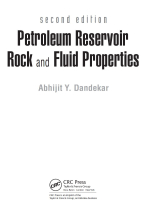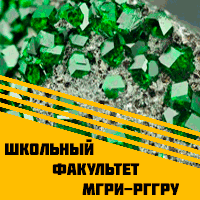Добрый день, Коллеги. Важное сообщение, просьба принять участие. Музей Ферсмана ищет помощь для реставрационных работ в помещении. Подробности по ссылке
Petroleum reservoir rock and fluid properties / Свойства пород-коллекторов нефти и флюидов
The primary purpose and scope of this book were already covered in great detail in the first edition. Therefore, rather than repeating that information again and dwelling on the details, only the highlights and changes made in the second edition distinguishing it from the first edition are included here.
Chapter 1 still serves as an overall introduction to petroleum reservoir rock and fluid properties but has now been organized in a more systematic and easy to understand manner. The discussion begins with a basic definition and significance of “petroleum,” “reservoir,” “rock,” and “fluids.” This is followed by the geological aspects pertaining to the formation of petroleum reservoirs and the ranges of pressures, temperatures, areal extent, pay zone thickness, and depths encountered, including examples of some of the extremes. Currently, unconventional and technically challenged oil and gas resources have gained a prominent place in the petroleum industry’s overall portfolio given the ever expanding technology envelope.
Therefore, some statistical information in terms of this resource base is also covered in this chapter. The chapter concludes with the significance of various reservoir rock and fluid properties, which is also demonstrated via some of the commonly used equations in reservoir engineering.
In Chapter 3, two new practice problems have been introduced that cover porosity calculation using helium porosimetry and CT scanning, respectively. Chapter 4 on absolute permeability now includes a more generalized case of parallel flow, relating area with average permeability. Generalized expressions for calculation of combined matrix–channel and matrix–fracture permeability have been included and two new related practice problems have been added. A solved example on the determination of absolute permeability using a straight line fit of Q vs. .P that is based on not one but multiple flow rates and corresponding differential pressures is also provided. Finally, a new practice problem on the application of radial flow equations is included <...>




